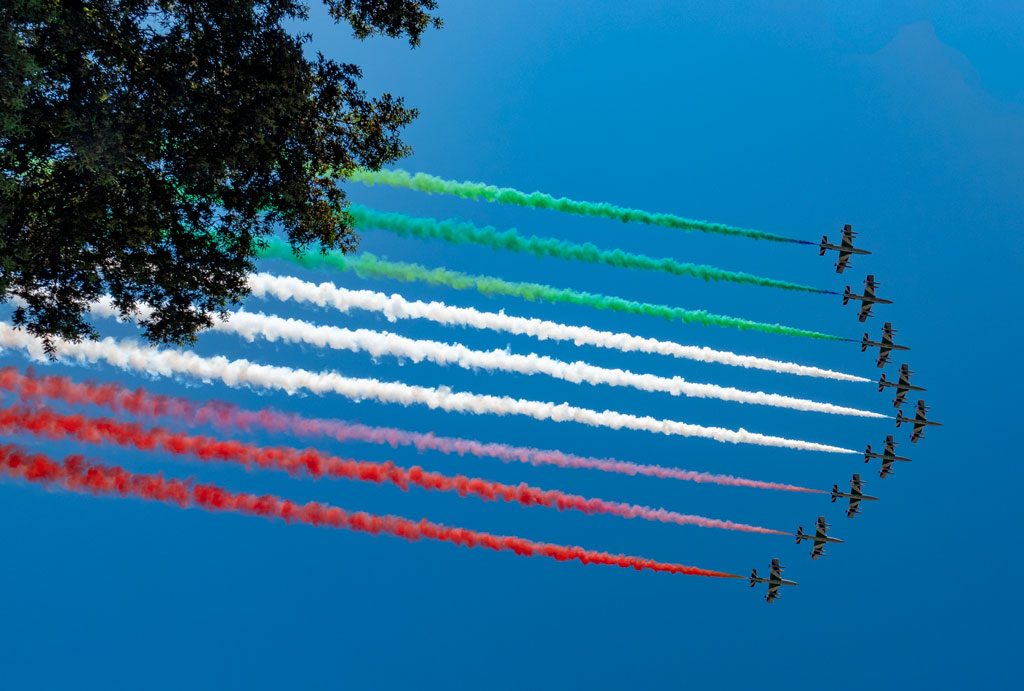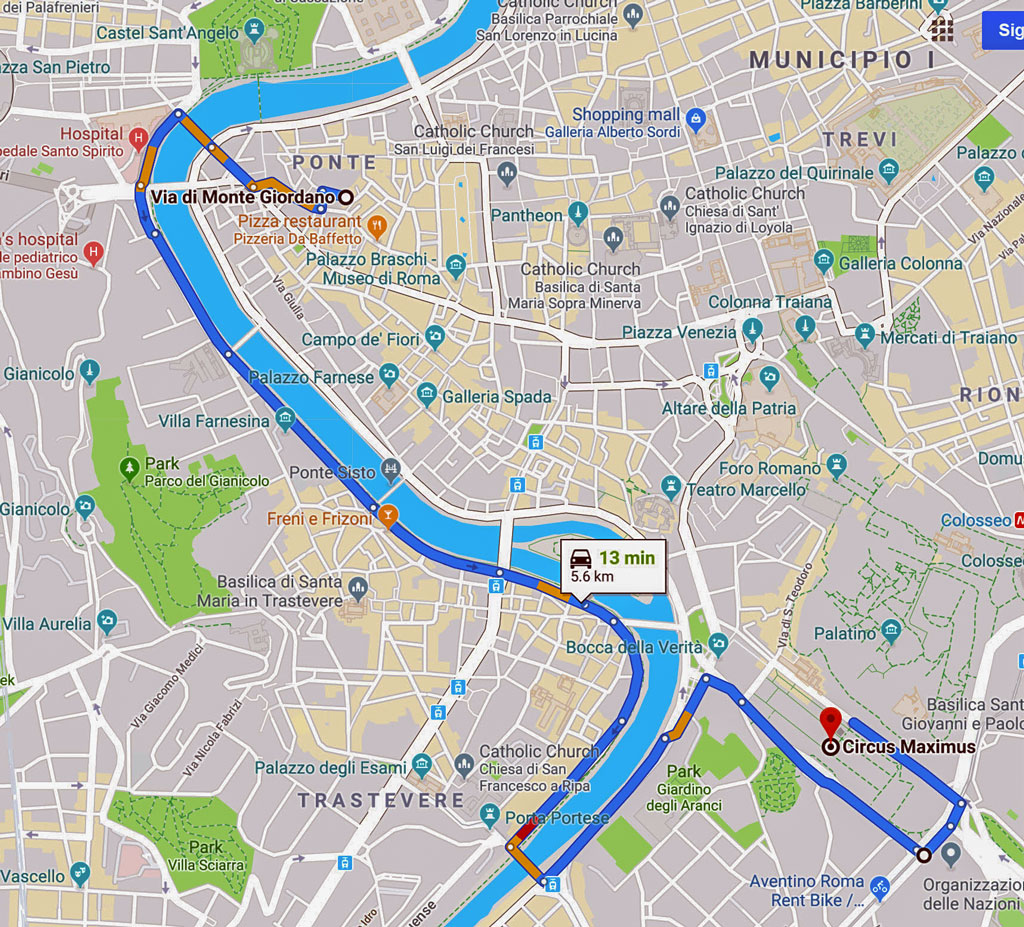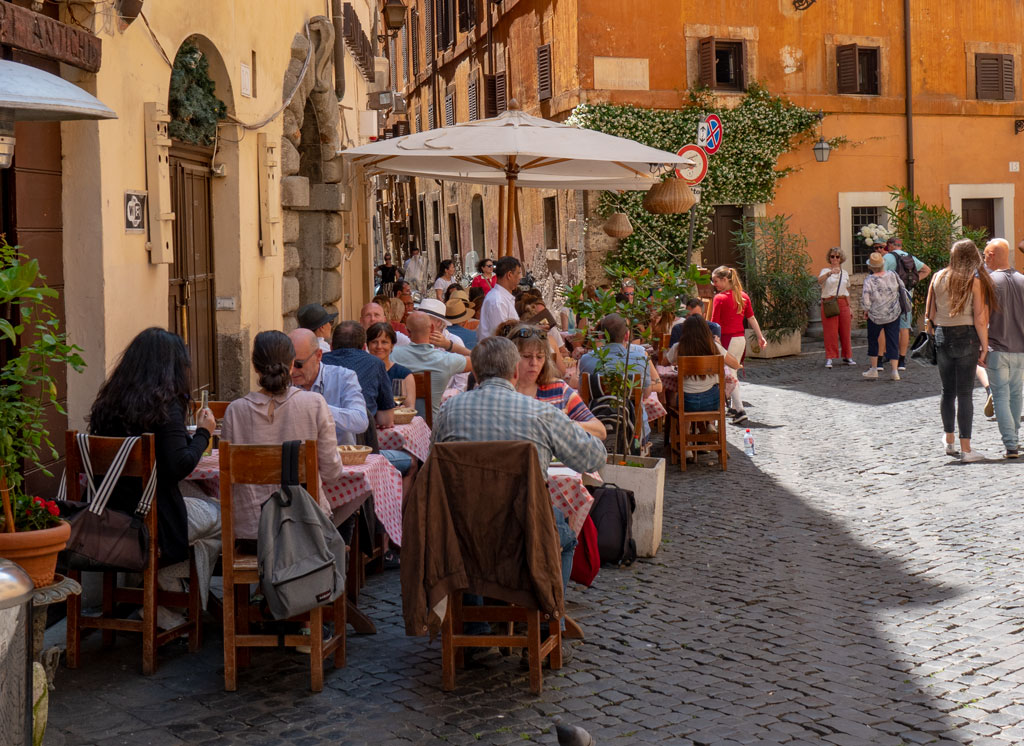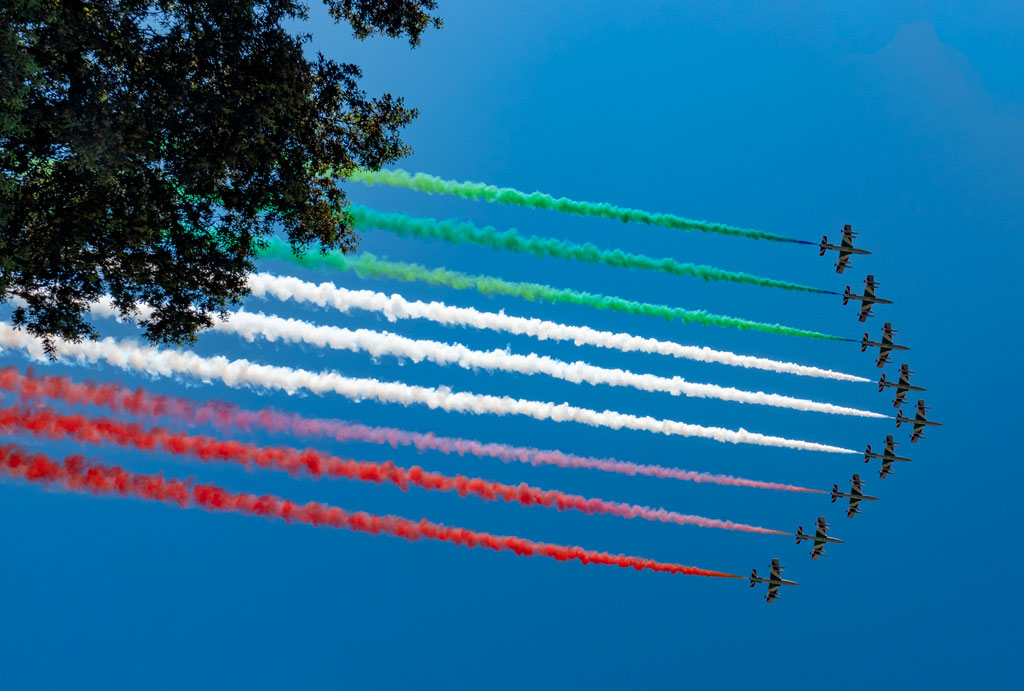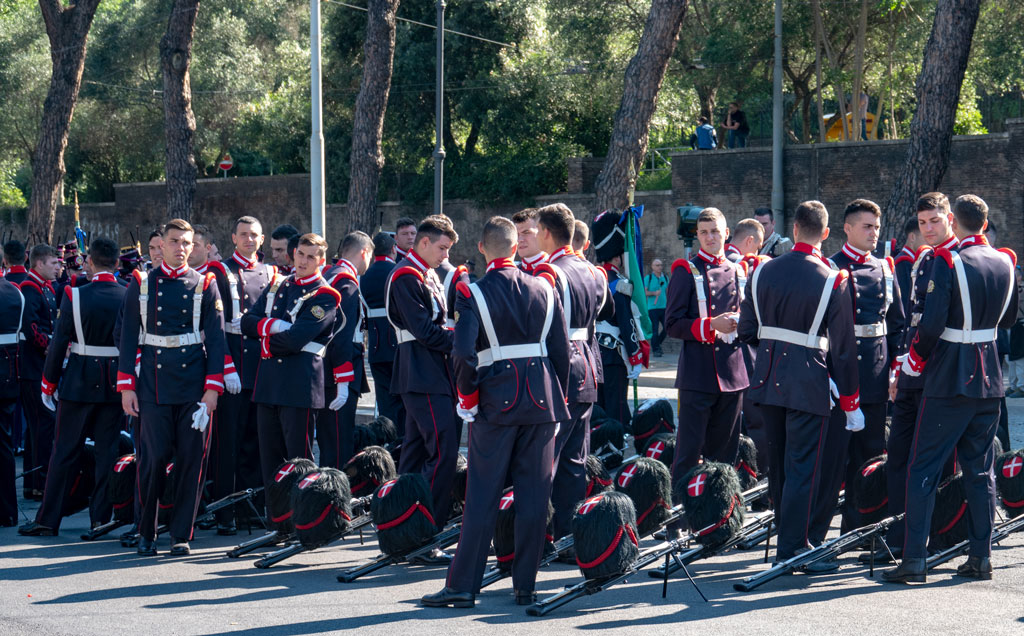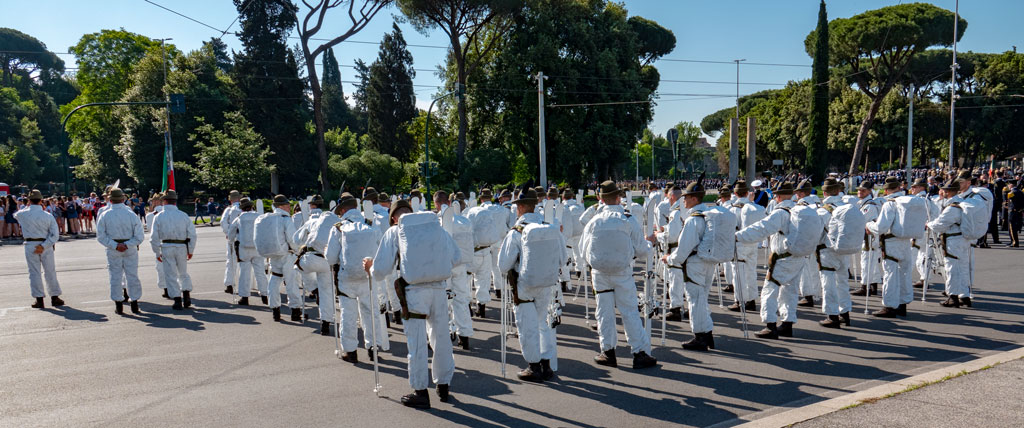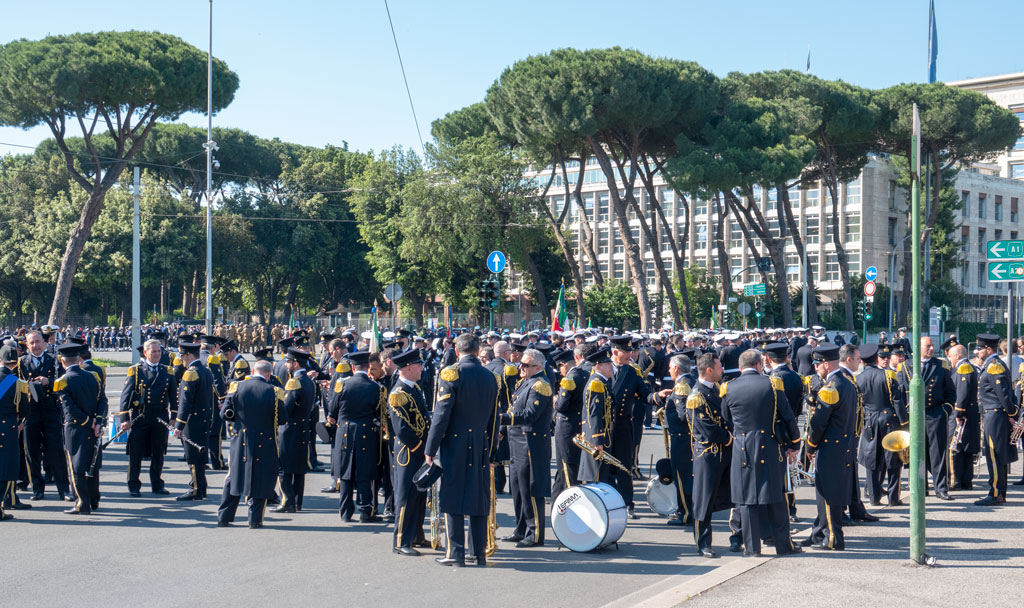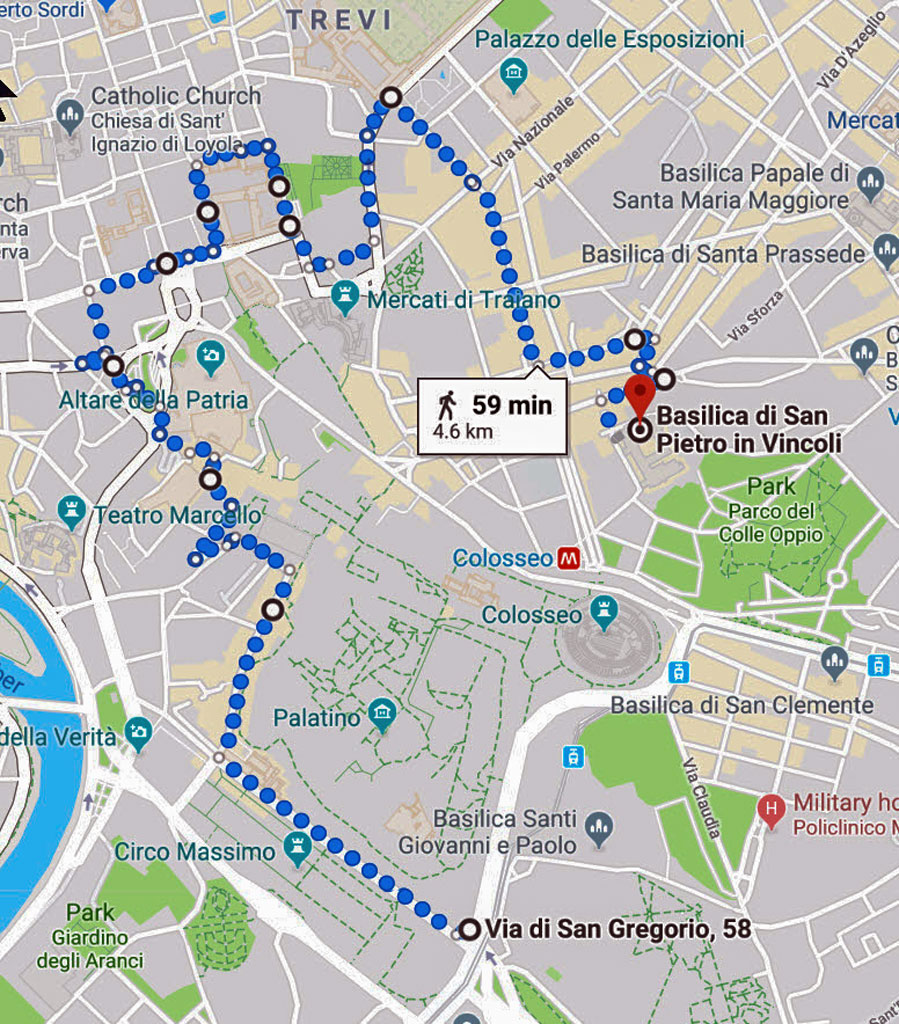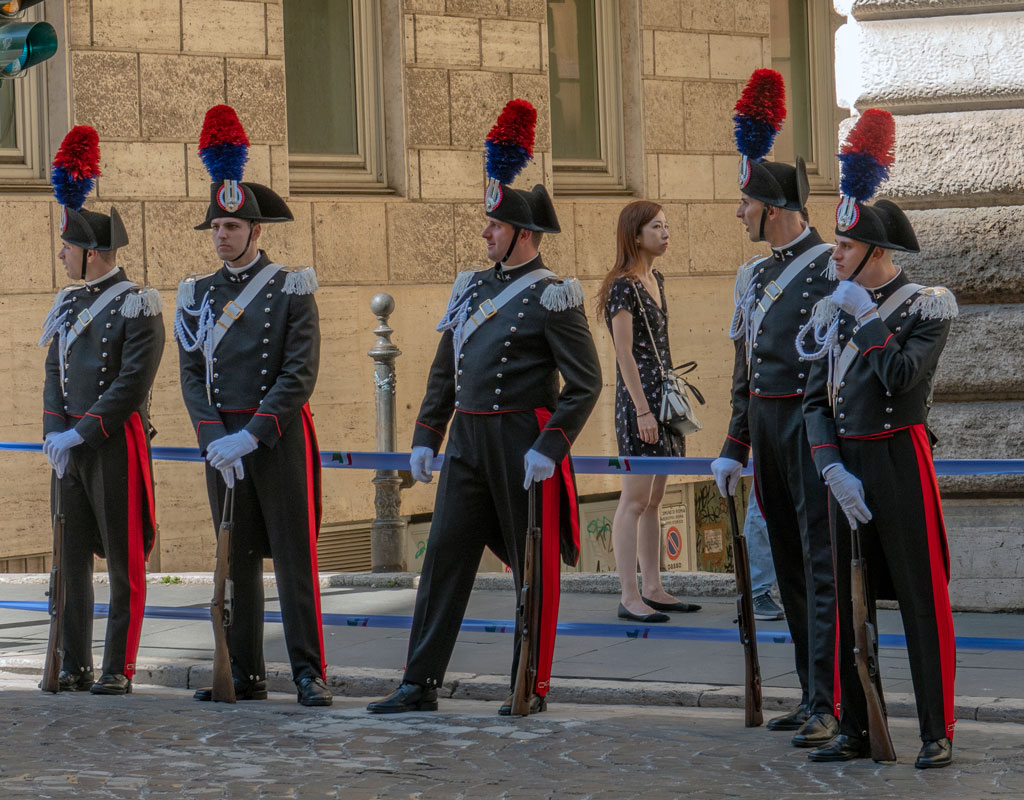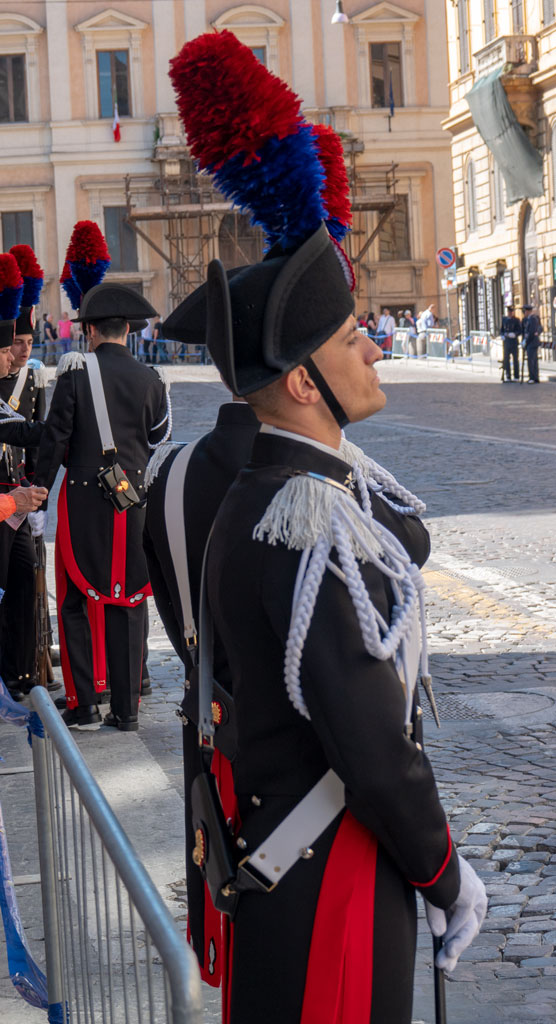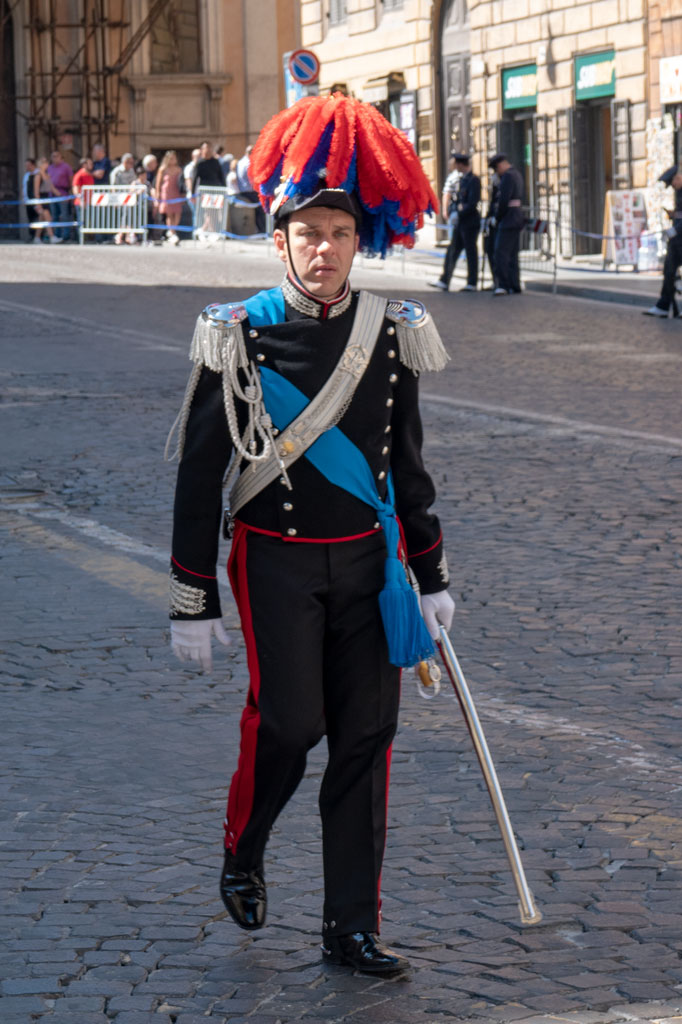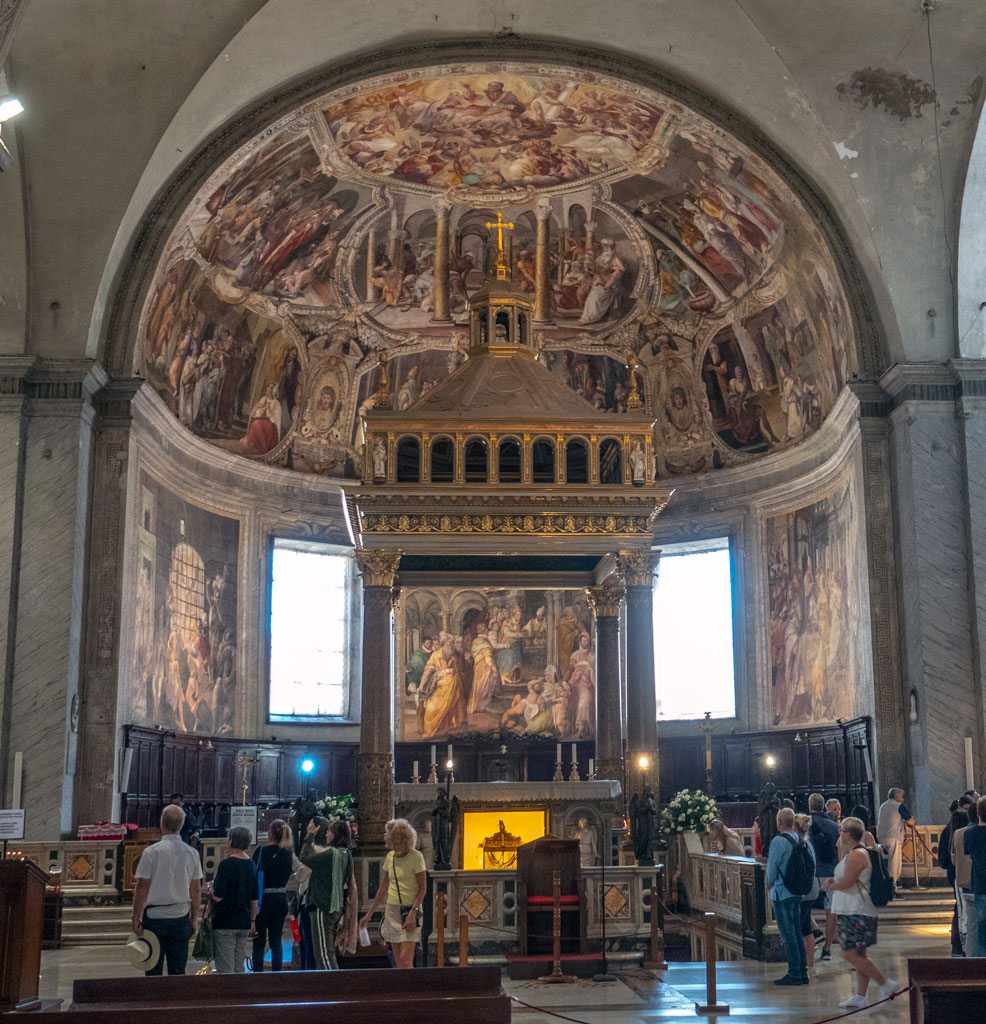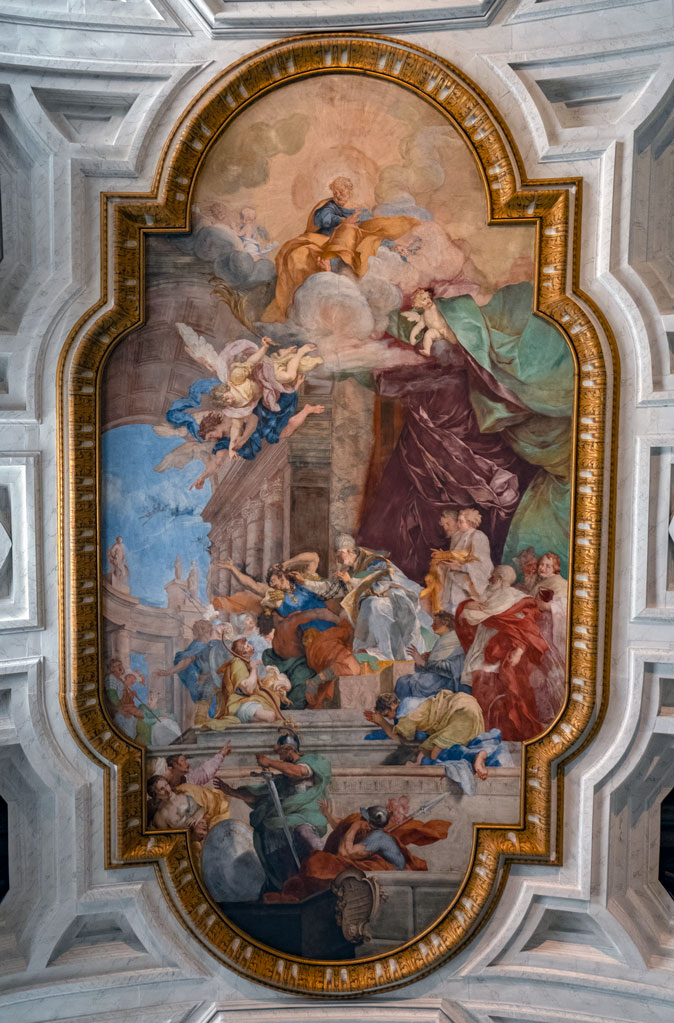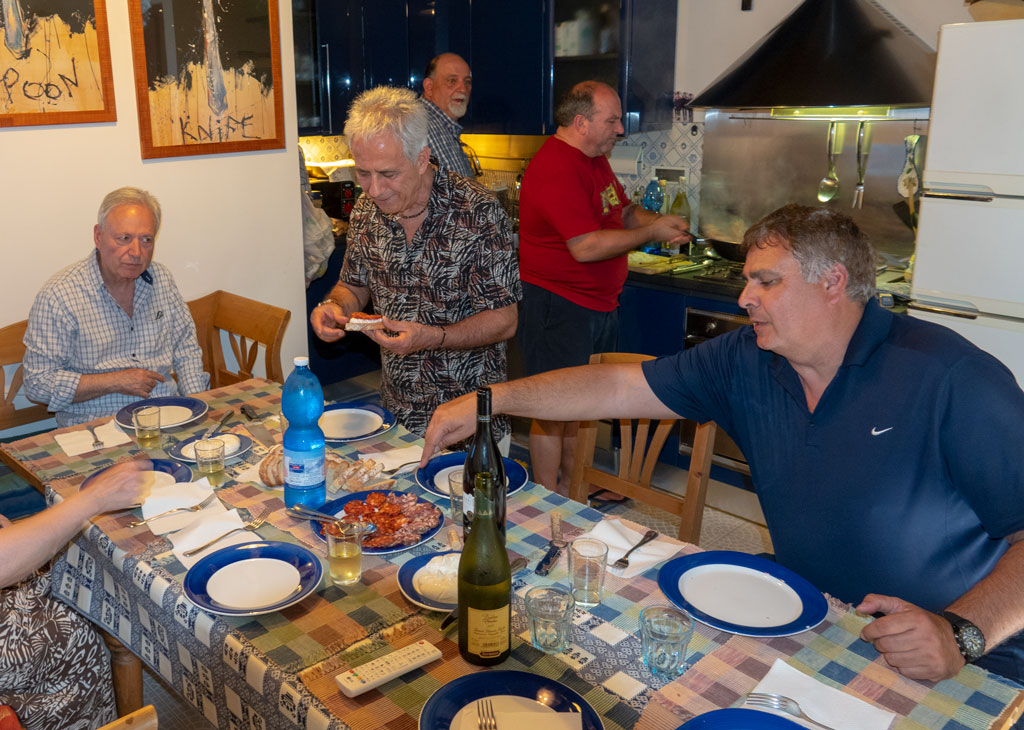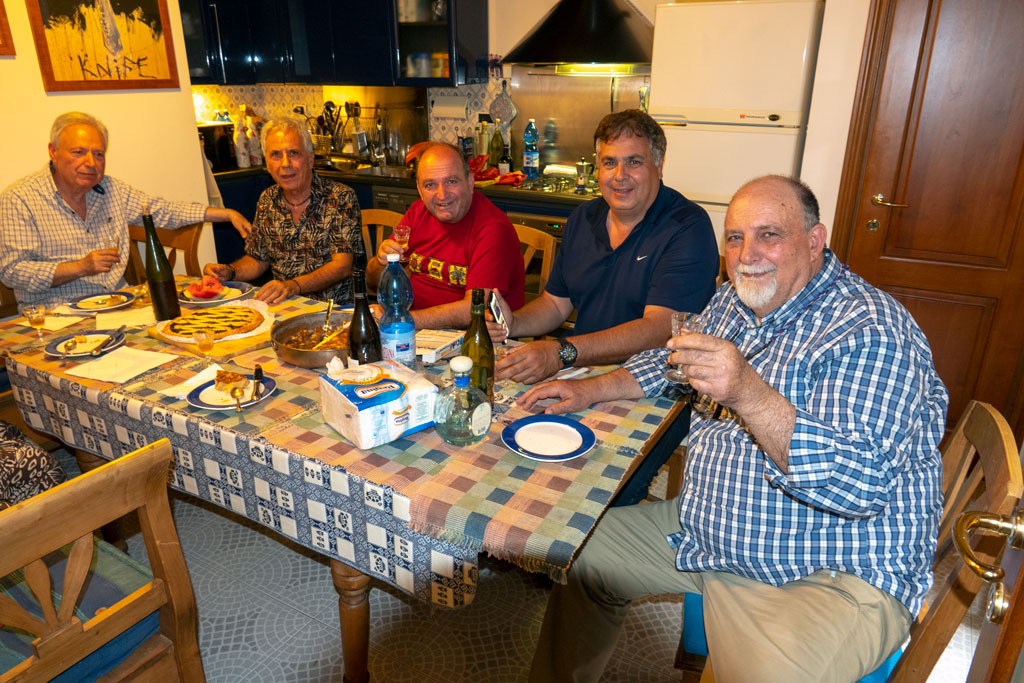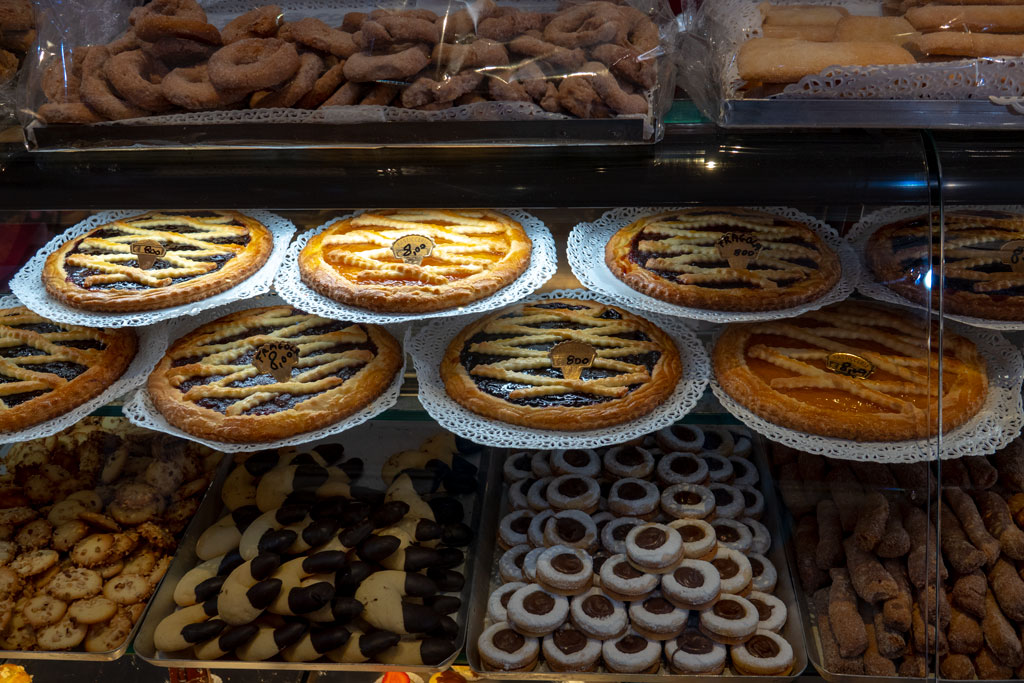TODAY’S TOURING
Today was a killer day; Festa della Republica (Italy’s version of the 4th of July). We had prepaid tickets, needed, to view the Domus Aurea. We knew about the parade so we scheduled 1 1/2 hours for a 30 minute walk. We even used a taxi to save time. It didn’t work out :(. The streets all around the center of Rome were blocked off and pedestrians weren’t allowed to cross any streets. The taxi dropped us off at a blocked street that would only be a 5 minute walk from the Domus Aurea. The street was blocked, even for pedestrians. We had to walk all the way around the entire Palatine Hill including the Vittorio Emanuele II Monument. We got caught in crowds, in reserved areas fighting for viewing locations for the military parade. We had to walk long detours to get around the street closures. At our appointment time for the Domus Aurea tour, we had traveled 2 hours (taxi 30 minutes, walked 90 minutes) and were still 30 minutes from the Domus Aurea. We made it to San Pietro in Vincoli, were exhausted, and returned back to our condo. After much research we came up with a plan: take the nearby metro one stop to the train station, and take a taxi back to the condo. It worked. 🙂 We rested a couple of hours and walked to Enzo’s apartment nearby for Sunday lunch with Enzo, Antonio, Aristodemo, & Franko Pellico and their friend Alberto. It was a wonderful lunch with:
- Burrata
- Sopressata from Calabria (2 kinds)
- Fresh, in season Porcini mushroom risotto
- Sweet Sicilian tomato salad with sweet onions from Tropea
- Capretto (baby goat) from Calabria with roast potatoes
- Two kinds of crostata
No one left hungry. At our condo, we rested and washed clothes. Tomorrow needs to be a resting day!
REFERENCES
Domus Aurea (Lonely Planet)
The interior of this gorgeous 16th-century villa is fantastically frescoed from top to bottom. Several paintings in the Loggia of Cupid and Psyche and the Loggia of Galatea, both on the ground floor, are attributed to Raphael. On the 1st floor, Peruzzi’s dazzling frescoes in the Salone delle Prospettive are a superb illusionary perspective of a colonnade and panorama of 16th-century Rome.
Festa della Republica (Wiki)
Festa della Repubblica ([ˈfɛsta della reˈpubblika]; in English, Republic Day) is the Italian National Day and Republic Day, which is celebrated on 2 June each year. The day commemorates the institutional referendum held by universal suffrage in 1946, in which the Italian people were called to the polls to decide on the form of government, following the Second World War and the fall of Fascism. With 12,717,923 votes for a republic and 10,719,284 for the monarchy, the male descendants of the House of Savoy were sent into exile. To commemorate it, a grand military parade is held in central Rome, presided over by the President of the Italian Republic in his role as Supreme Commander of the Armed Forces. The Prime Minister, formally known as the President of the Council of Ministers, and other high officers of state also attend. There are important celebrations in all the Italian embassies and foreign heads of state are invited. Even though the main parade is in Rome, many Italian cities celebrate the day as well.[1]
Basilica di San Pietro in Vincoli (Lonely Planet)
Pilgrims and art lovers flock to this 5th-century basilica for two reasons: to marvel at Michelangelo’s colossal Moses (1505) sculpture and to see the chains that supposedly bound St Peter when he was imprisoned in the Carcere Mamertino (near the Roman Forum). Access to the church is via a flight of steps through a low arch that leads up from Via Cavour. The church was built specially to house the shackles of St Peter, which had been sent to Constantinople after the saint’s death, but were later returned as relics. They arrived in two pieces and legend has it that when they were reunited they miraculously joined together. They are now displayed under the altar. To the right of the altar, Michelangelo’s Moses forms the centrepiece of his unfinished tomb for Pope Julius II. The prophet strikes a muscular pose with well-defined biceps, a magnificent waist-length beard and two small horns sticking out of his head. These were inspired by a mistranslation of a biblical passage: where the original said that rays of light issued from Moses’ face, the translator wrote ‘horns’. Michelangelo was aware of the mistake, but gave Moses horns anyway. Flanking Moses are statues of Leah and Rachel, probably completed by Michelangelo’s students.
The tomb, despite its imposing scale, was never finished – Michelangelo originally envisaged 40 statues, but got sidetracked by the Sistine Chapel – and Pope Julius II was buried in St Peter’s Basilica.
